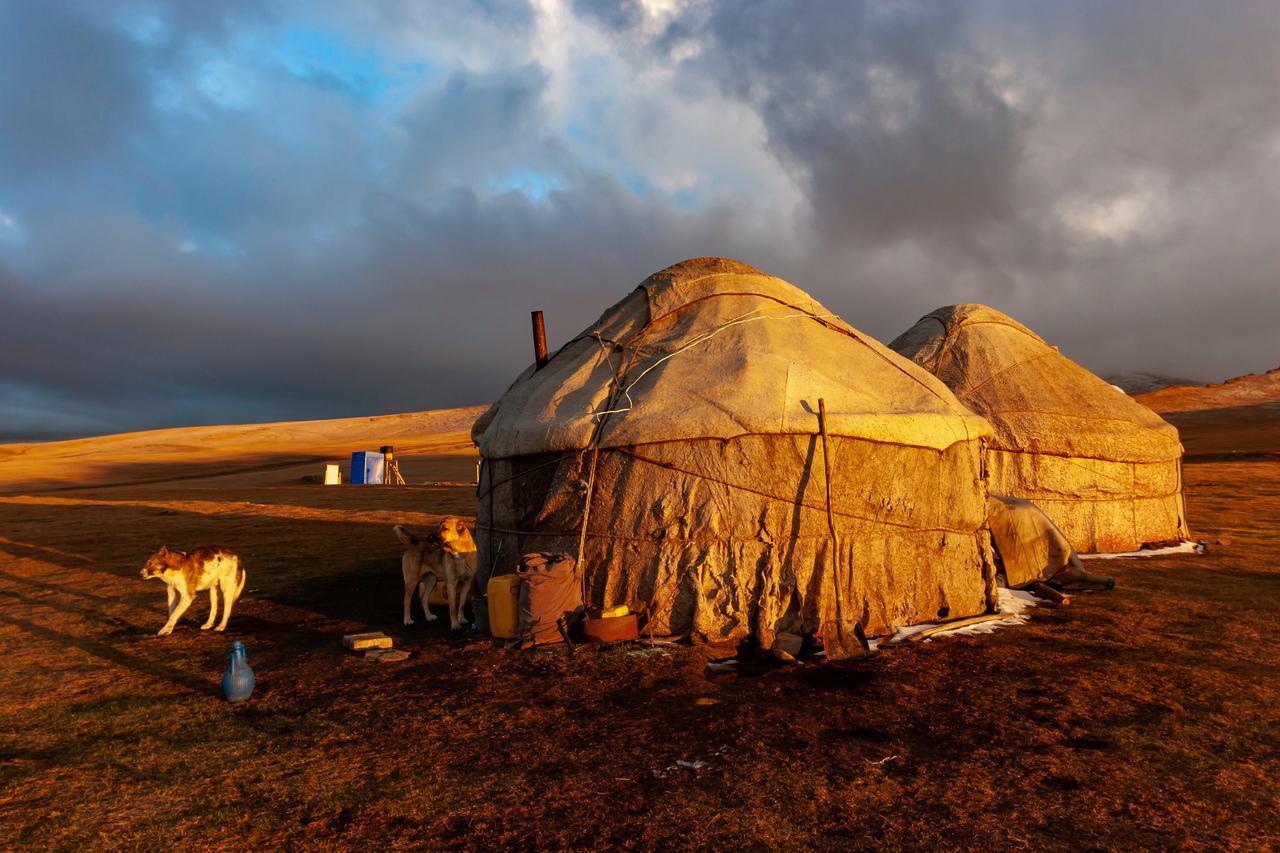
For generations, communities across Eurasia have embraced resourcefulness—repairing, reusing, and making the most of what they had. These traditions offer a practical foundation for sustainable living today.
In a Central Asian yurt, every item—from felt to wooden frames—was designed for reuse and longevity. Georgian winemakers used clayqvevrifor centuries, fermenting wine underground in vessels that last for generations. Across Anatolia, water systems—from Roman aqueducts to Ottoman fountains—reflect a deep respect for resource management. In Serbia, the tradition ofmoba (collective labor for harvesting or building) embodies community-driven sustainability. These examples show that circular principles are not new; they are rooted in the region’s cultural heritage—even if many of these traditions have faded in the wake of industrialization.
Today, as the world searches for new models of growth that combine climate neutrality, efficiency, and inclusivity, such habits can serve as a powerful starting point for the future.
But tradition alone is not enough. The circular economy is not just about recycling—it is a complex transformation that spans energy, agriculture, industry, biodiversity protection, and social equity. It requires systemic change in how we produce,consumeand collaborate. This perspective will be part of the discussions at the Regional Circular Economy Forum 2025, taking place in Istanbul on Oct. 23–24.
The forum is organized under the umbrella of the World Circular Economy Forum and hosted in partnership with the Istanbul Chamber of Industry(ICI) and the Finnish Innovation Fund Sitra, with the support of the consulates of the Netherlands, Sweden, Denmark and Norway. It will bring together business leaders, policymakers, international organizations, and technology providers to exchange ideas, share solutions, and accelerate the transition to circularity.
According to the latest Circularity Gap Report 2025, only 6.9% of materials used globally come from recycled sources. Vast volumes of plastics, metals, textiles, and organic waste still end up in landfills or incinerators. This not only threatens ecosystems but also represents a loss of economic value. Countries around the world are seeking new growth models that align with climate goals and the public’s demand for responsible consumption.
Finland, the Forum’s co-organizer, was the first country to adopt a national circular economy roadmap and aims to become a carbon-neutral circular society by 2035. The Nordic region has long demonstrated leadership: Norway recycles over 95% of plastic bottles, Sweden offers tax incentives for repair and reuse, and Denmark converts organic waste into energy through more than 150 biogas plants. Even libraries in Helsinki lend out tools—a modern take on community sharing.
Momentum is building across Eurasia, too. In Kazakhstan, the municipal waste recycling rate rose from 2.6% in 2016 to 24% in 2023. In Uzbekistan, water-saving technologies in agriculture are helping close resource loops. Türkiye’s Zero Waste Program, launched in 2017, has reached nearly 200,000 institutions and trained over 22 million people, contributing to the recycling of nearly 60 million tons of waste.
Türkiye plays a strategic role in this transition. As one of the region’s largest manufacturing economies and a key player in global supply chains, the country is directly involved in the circular shift. Turkish industrial actors are increasingly integrating sustainability and circularity into their strategies. Last year’s Plast Eurasia Istanbul showcased this momentum, with Turkish companies presenting innovations in recycling, bioplastics, and waste-to-resource systems.
UNDP’s role in this transformation is to connect the dots—linking innovation with policy, and local action with global ambition. UNDP helps governments integrate circularity into national strategies and industrial policies, supports businesses in de-risking investments through green finance and innovation challenges, and facilitates partnerships that bring science, technology, and entrepreneurship together. Acting as a bridge between countries, institutions, and the private sector, UNDP seeks to create spaces where circular solutions can move from pilot to scale.
Through the BOOST innovation challenge, we help scale circular solutions in Ukraine and Moldova. In Serbia, startups are repurposing textile waste into new materials, while in Bosnia and Herzegovina, agricultural byproducts are being transformed into sustainable packaging. These examples show how circularity can drive entrepreneurship, create jobs, and reduce environmental impact.
But real change requires action at every level. Governments must embed circular principles into industrial policy, education, and consumer culture. Businesses must rethink production models, shifting from volume to value, and from linear to circular. That’s why partnerships with the private sector are essential to this process.
The circular economy is not a trend or a theory. It is an opportunity for the region to align with the new global economy, boost competitiveness, reduce environmental harm—and at the same time, draw strength from its own traditions.
Steliana Nedera
Manager, UNDP Istanbul Regional Hub